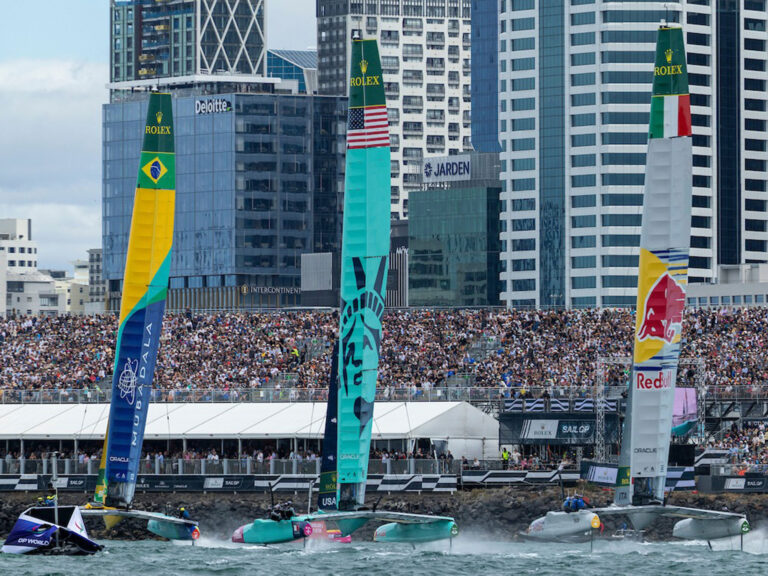Its supposed to be a friendly competition between nationsa contest between sailors, designers, and shipwrights of each nation. The Americas Cup has always missed the mark to some extent, and never by a greater margin than this year. Theres been constant acrimony among teams and a greater blurring of national identity than ever.When the match is over this year, it will be won by a skipper born in New Zealand–Dean Barker, Russell Coutts, or Chris Dickson. (I am writing before the Louis Vuitton Cup finals.) The Swiss team has a German designer; the American team, a Kiwi; and the Kiwi team, an American. All the sails will have been built in Nevada. All the spars, in New Zealand, except the Swiss spar, built in Rhode Island. The modern Americas Cup is a truly international sport, just not the kind envisioned in its deed of gift. I dont disagree lightly with Olin Stephens, Bill Ficker, and our editor at large Gary Jobson when they say that the Cup should return to the time when sailors and designers were all in some strict way nationals of the country they represent (https://www.sailingworld.com/sw_article_AC.php?articleID=1622). But I cant honestly advocate such a simplistic approach; it would not only be impractical, but would also take away from the broad international dynamic of the Cup. The event would rapidly revert to involving only a few countries, and the brainpower and technology exercised by hundreds of talented sailors, designers, builders, riggers, and sailmakers would slip away.Outside of the distance racing realm, the Americas Cup drives professional sailboat racing, and has a loose relationship with the gradually building Swedish Match pro tour. Instead of pushing the Cup into the past, why not revamp the Cup rules to improve the event and integrate it with the pro tour?First, do away with nationality requirements, except that half of the crew must carry passports of the country they represent. Star-quality talent can still earn free-agent salaries, and sailors from the home country will give each team its national stripes.Next, establish an Americas Cup management group to put the Cup on a consistent three-year cycle and to announce a major revision to the Americas Cup Class rule one month after the Cup Match. A big-enough rule change would make design information less relevant, so this would be a good time for design teams to realign. Then, using the old Cup class rule and old boats, hold the first round of the next Louis Vuitton series one year later in New Zealand, no matter who wins the Cup. Attendance would be required because ranking points gained in this round would count towards the final challenger series. In the meantime, use the year-long Swedish Match tour as a means for Americas Cup team sailors to stay sharp and in the public eye, while scoring more team ranking points. One year later–with one year to go before the next Cup Match–hold a second Louis Vuitton series at the venue of the upcoming Cup defense, this time in boats designed to the new rule. Again, teams would score more points; you could also call this the class world championship. Finally, for a shorter, two-month lead-up to the Americas Cup, the challengers would be seeded according to their rankings and race in a double-elimination series for the right to challenge.The worlds changed many times since the deed of gift was penned. Despite the shenanigans weve witnessed recently, theres great vitality in the Cup arena. In shorter, annual doses, building towards the next big event, racing among Americas Cup boats and teams would be something special.





